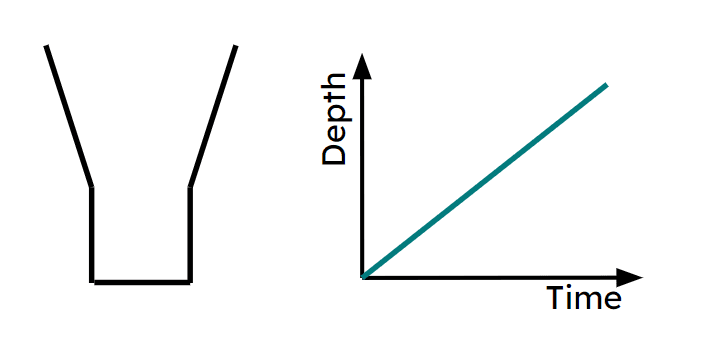Myths about teaching can hold you back


- Year 11•
- Foundation
Interpreting and drawing real-life graphs
I can interpret and draw other real-life graphs.


- Year 11•
- Foundation
Interpreting and drawing real-life graphs
I can interpret and draw other real-life graphs.
These resources were made for remote use during the pandemic, not classroom teaching.
Switch to our new teaching resources now - designed by teachers and leading subject experts, and tested in classrooms.
Lesson details
Key learning points
- Not all real-life graphs can be drawn using sections of different linear graphs.
- The graphs are models, which means that we want them to be useful.
- Different containers may need different graphs to model filling them.
- Volume of liquid changes over time and this is affected by container shape.
Keywords
Time series graphs - Time series graphs show data over a time period. The time period is always shown on the $$x$$-axis. Data points are joined chronologically by line segments.
Extrapolation - Extrapolation is the process of estimating unknown values that are outside the range of existing data.
Interpolation - Interpolation is the process of estimating unknown values that are inside the range of existing data.
Common misconception
Interpolation is always more accurate than extrapolation.
If a graph is plotting data collected at set points then there is no way to know what is happening between the points. The trend between the points could be a curve, a line or could fluctuate. Interpolation could therefore be inaccurate.
To help you plan your year 11 maths lesson on: Interpreting and drawing real-life graphs, download all teaching resources for free and adapt to suit your pupils' needs...
To help you plan your year 11 maths lesson on: Interpreting and drawing real-life graphs, download all teaching resources for free and adapt to suit your pupils' needs.
The starter quiz will activate and check your pupils' prior knowledge, with versions available both with and without answers in PDF format.
We use learning cycles to break down learning into key concepts or ideas linked to the learning outcome. Each learning cycle features explanations with checks for understanding and practice tasks with feedback. All of this is found in our slide decks, ready for you to download and edit. The practice tasks are also available as printable worksheets and some lessons have additional materials with extra material you might need for teaching the lesson.
The assessment exit quiz will test your pupils' understanding of the key learning points.
Our video is a tool for planning, showing how other teachers might teach the lesson, offering helpful tips, modelled explanations and inspiration for your own delivery in the classroom. Plus, you can set it as homework or revision for pupils and keep their learning on track by sharing an online pupil version of this lesson.
Explore more key stage 4 maths lessons from the Real-life graphs unit, dive into the full secondary maths curriculum, or learn more about lesson planning.

Licence
Prior knowledge starter quiz
6 Questions
Q1.Which of these axes are correctly drawn?
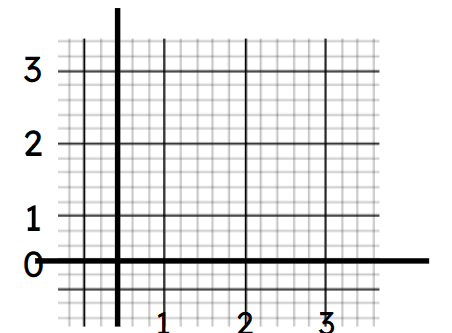
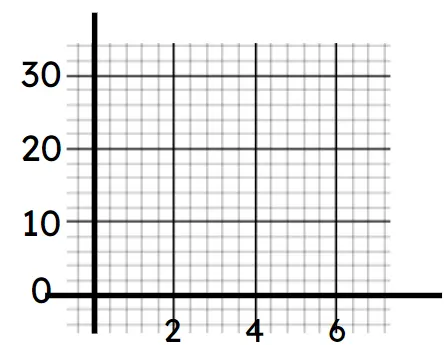
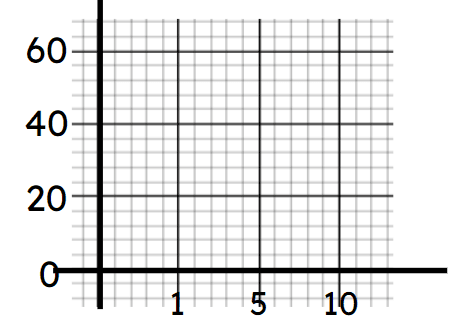
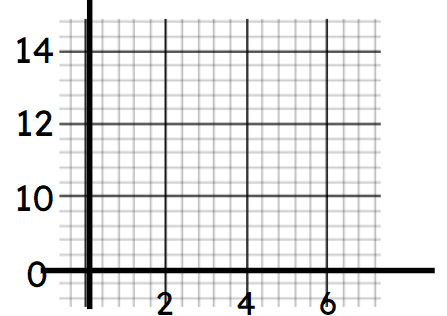
Q2.__________ is the process of estimating unknown values that are outside the range of existing data.
Q3.__________ is the process of estimating unknown values that are inside the range of existing data.
Q4.Which of these could be units of volume?
Q5.This is the cross section of a container. If it was filled at a constant rate, which of these would be its depth-time graph?
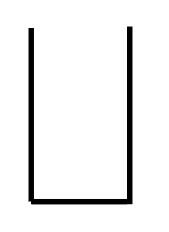
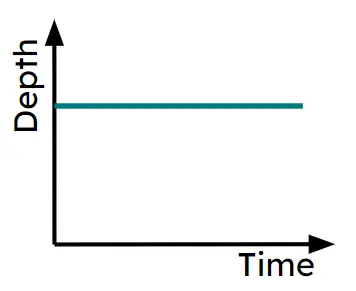

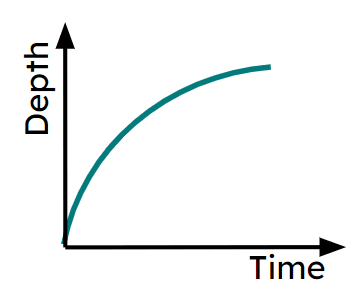
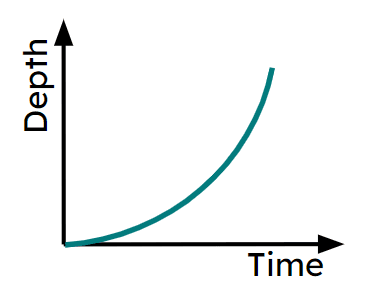
Q6.This is the cross-section of a container. If it was filled at a constant rate, which of these would be its depth-time graph?
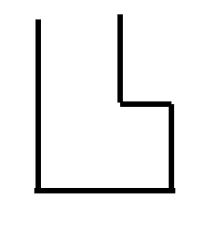
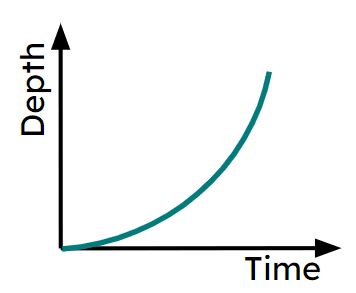
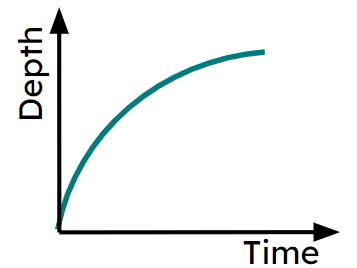
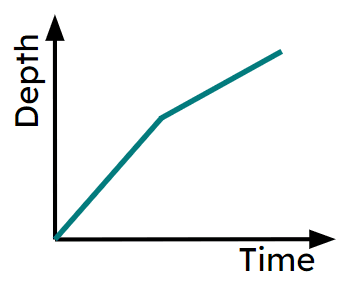
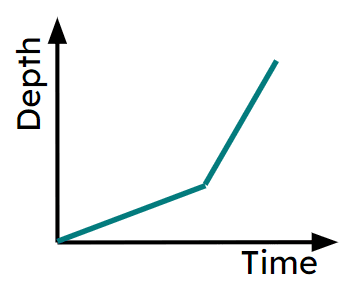
Assessment exit quiz
6 Questions
Q1.On a time series graph, data points are joined chronologically by __________.
Q2.Why can it be inaccurate to interpolate from a time series graph?
Q3.Which graph would match Andeep's scenario?
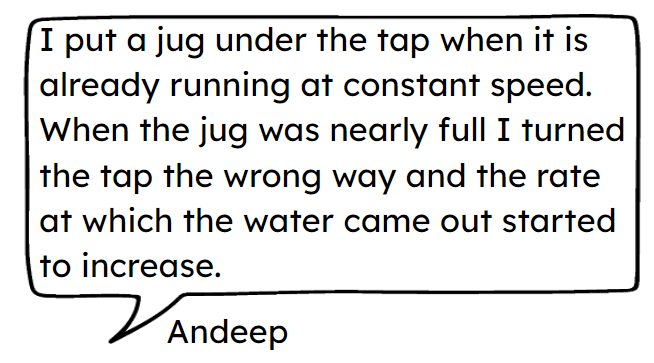
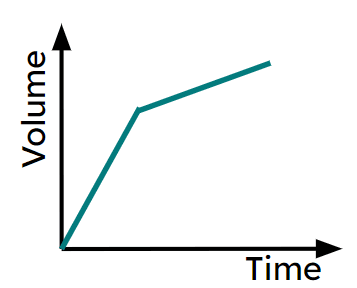

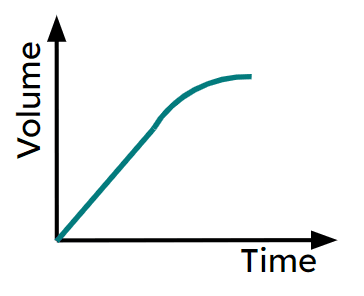
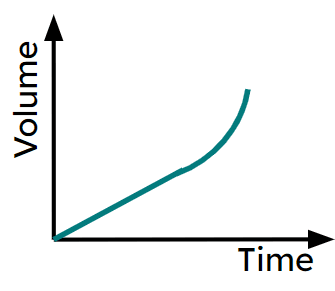
Q4.This container is filled at a constant rate. Which graph could model this scenario?
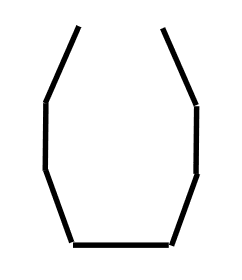
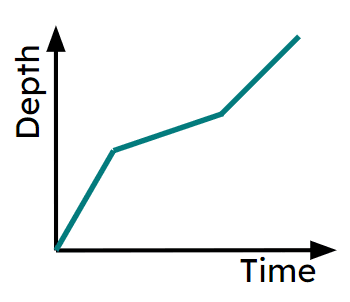
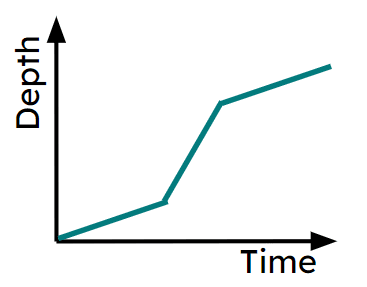
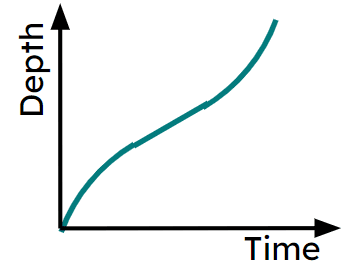

Q5.This container is filled at a constant rate. Which graphs could model this scenario?
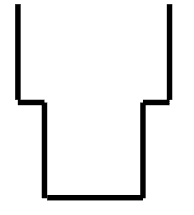
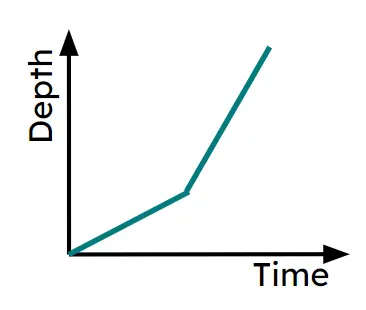
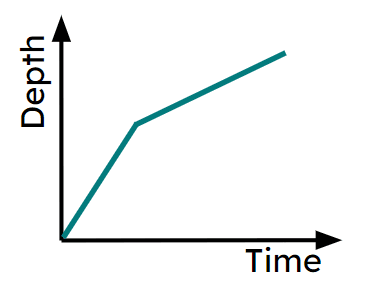
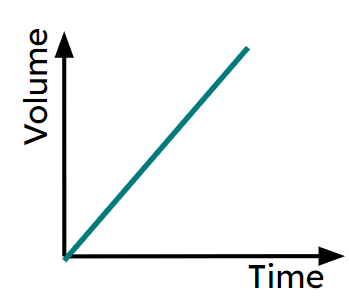
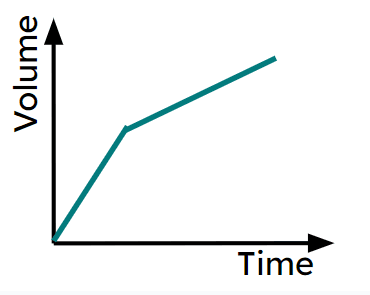
Q6.Aisha is filling this container with water. What must be the case for this depth-time graph to be accurate?
